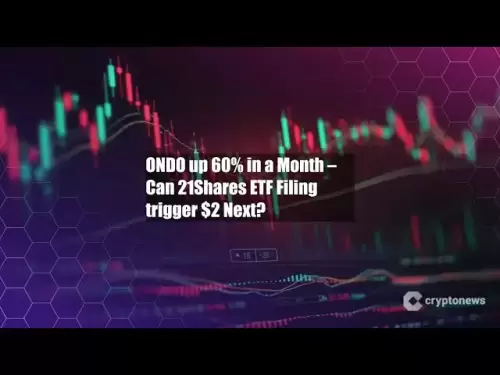-
 Bitcoin
Bitcoin $115800
-2.47% -
 Ethereum
Ethereum $3690
1.19% -
 XRP
XRP $3.105
-1.91% -
 Tether USDt
Tether USDt $0.9999
-0.07% -
 BNB
BNB $771.0
0.19% -
 Solana
Solana $179.9
-3.54% -
 USDC
USDC $0.9998
-0.03% -
 Dogecoin
Dogecoin $0.2291
-3.40% -
 TRON
TRON $0.3140
0.81% -
 Cardano
Cardano $0.8007
-1.24% -
 Hyperliquid
Hyperliquid $42.92
-0.44% -
 Stellar
Stellar $0.4212
-2.16% -
 Sui
Sui $3.730
0.03% -
 Chainlink
Chainlink $18.06
0.03% -
 Bitcoin Cash
Bitcoin Cash $546.6
5.08% -
 Hedera
Hedera $0.2438
0.55% -
 Avalanche
Avalanche $23.57
-0.81% -
 Litecoin
Litecoin $114.2
1.04% -
 UNUS SED LEO
UNUS SED LEO $8.970
-0.35% -
 Shiba Inu
Shiba Inu $0.00001363
-0.16% -
 Toncoin
Toncoin $3.136
-0.89% -
 Ethena USDe
Ethena USDe $1.001
-0.04% -
 Uniswap
Uniswap $10.30
1.42% -
 Polkadot
Polkadot $4.013
-0.06% -
 Monero
Monero $324.8
0.87% -
 Dai
Dai $0.9999
-0.04% -
 Bitget Token
Bitget Token $4.509
-1.38% -
 Pepe
Pepe $0.00001226
-2.60% -
 Aave
Aave $291.8
1.34% -
 Cronos
Cronos $0.1294
2.19%
What are the trading pairs of dYdX?
dYdX offers trading pairs like BTC/USDC and ETH/USDC, crucial for traders due to high liquidity, and also supports perpetual contracts and margin trading for leveraged positions.
Apr 10, 2025 at 09:49 am
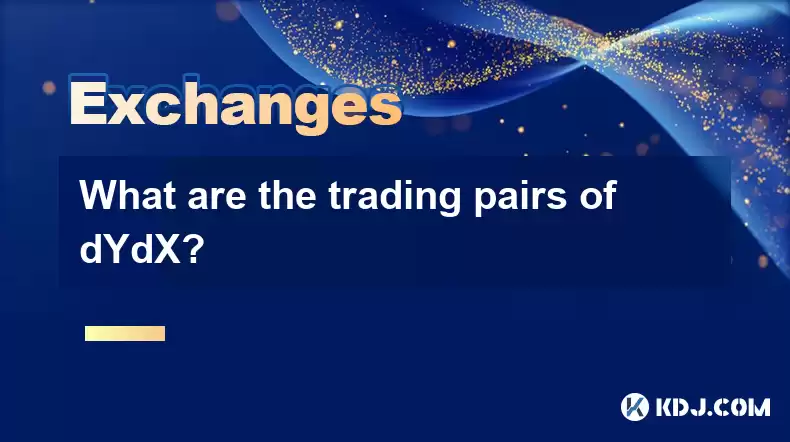
dYdX is a decentralized exchange that offers a variety of trading pairs, primarily focused on cryptocurrencies. Understanding the trading pairs available on dYdX is crucial for traders looking to engage with the platform. This article will explore the different trading pairs offered by dYdX, their significance, and how to navigate them effectively.
Overview of dYdX Trading Pairs
dYdX supports a range of trading pairs, which are combinations of cryptocurrencies that can be traded against each other. The primary trading pairs on dYdX include those involving major cryptocurrencies like Bitcoin (BTC), Ethereum (ETH), and stablecoins such as USDC and DAI. These pairs are essential for traders as they provide liquidity and are often used for both speculative trading and hedging strategies.
Major Cryptocurrency Pairs
The most commonly traded pairs on dYdX involve Bitcoin and Ethereum. For instance, you can trade BTC/USDC, which allows you to buy or sell Bitcoin using USDC as the base currency. Similarly, ETH/USDC is another popular pair where Ethereum is traded against USDC. These pairs are significant because they offer high liquidity, making it easier to enter and exit positions.
In addition to BTC and ETH, dYdX also supports trading pairs involving other major cryptocurrencies like LINK (Chainlink) and UNI (Uniswap). For example, LINK/USDC and UNI/USDC are available, allowing traders to speculate on the price movements of these tokens against a stablecoin.
Stablecoin Pairs
Stablecoin pairs are another crucial component of dYdX's trading ecosystem. These pairs involve trading one stablecoin against another, such as USDC/DAI. Stablecoin pairs are particularly useful for traders looking to minimize volatility while still engaging in trading activities. They are often used for arbitrage opportunities and as a way to move funds between different stablecoins efficiently.
Perpetual Contracts
dYdX is well-known for its perpetual contracts, which are a type of derivative that allows traders to speculate on the price of an asset without an expiration date. The platform offers perpetual contracts for various trading pairs, including BTC-USD, ETH-USD, and LINK-USD. These contracts are traded against USDC, providing a way for traders to gain exposure to the price movements of these assets with leverage.
To trade perpetual contracts on dYdX, follow these steps:
- Connect your wallet: Navigate to the dYdX website and connect your Ethereum wallet, such as MetaMask.
- Select the trading pair: Choose the perpetual contract you want to trade, such as BTC-USD.
- Place an order: Decide whether you want to go long or short, set your leverage, and enter the amount you wish to trade.
- Monitor and manage your position: Keep an eye on your open positions and use tools like stop-loss and take-profit orders to manage risk.
Margin Trading Pairs
dYdX also supports margin trading, which allows users to borrow funds to increase their trading position. The platform offers margin trading pairs such as BTC-USDC and ETH-USDC. When engaging in margin trading, it's important to understand the risks involved, as using leverage can amplify both gains and losses.
To start margin trading on dYdX, follow these steps:
- Deposit collateral: Ensure you have sufficient funds in your dYdX account to use as collateral.
- Select the margin trading pair: Choose the pair you want to trade, such as BTC-USDC.
- Set your leverage: Decide on the amount of leverage you want to use, keeping in mind the potential risks.
- Place your trade: Enter the amount you wish to trade and confirm the order.
- Monitor your position: Keep track of your margin levels and be prepared to add more collateral if necessary to avoid liquidation.
Spot Trading Pairs
While dYdX is primarily known for its derivatives and margin trading, it also offers spot trading pairs. Spot trading involves buying and selling cryptocurrencies directly without the use of leverage. Common spot trading pairs on dYdX include BTC/USDC, ETH/USDC, and LINK/USDC.
To engage in spot trading on dYdX, follow these steps:
- Connect your wallet: As with other trading activities, start by connecting your Ethereum wallet to the dYdX platform.
- Select the spot trading pair: Choose the pair you want to trade, such as BTC/USDC.
- Place your order: Decide whether you want to buy or sell, enter the amount, and set the price if you're placing a limit order.
- Confirm the trade: Review your order details and confirm the transaction.
- Monitor your trades: Keep an eye on your open orders and completed trades to manage your portfolio effectively.
Liquidity and Volume
Liquidity and trading volume are important factors to consider when choosing trading pairs on dYdX. Pairs with higher liquidity and volume tend to have tighter spreads and are easier to trade. For instance, BTC/USDC and ETH/USDC typically have high liquidity, making them attractive options for traders.
To check the liquidity and volume of a trading pair on dYdX, follow these steps:
- Navigate to the trading page: Go to the dYdX website and select the trading pair you're interested in.
- View the order book: Look at the order book to see the current buy and sell orders, which can give you an idea of the liquidity.
- Check the trading volume: The platform displays the trading volume for each pair, allowing you to assess its popularity and activity level.
Frequently Asked Questions
Q: Can I trade altcoins on dYdX?
A: Yes, dYdX supports trading pairs involving various altcoins, such as LINK and UNI, against stablecoins like USDC. However, the availability of altcoin pairs may vary, so it's best to check the platform for the most current offerings.
Q: Are there any fees associated with trading on dYdX?
A: Yes, dYdX charges fees for trading, which can vary depending on the type of trade and the trading pair. For instance, there are maker and taker fees for spot and perpetual contract trading. It's important to review the fee structure on the dYdX website before trading.
Q: How can I manage risk when trading on dYdX?
A: Managing risk on dYdX involves using tools like stop-loss and take-profit orders, monitoring your positions closely, and understanding the risks associated with leverage. It's also crucial to only trade with funds you can afford to lose and to diversify your trading strategies.
Q: Can I trade on dYdX from any country?
A: dYdX is accessible to users from many countries, but there may be restrictions in certain jurisdictions due to regulatory requirements. It's important to check the platform's terms of service and ensure compliance with local laws before trading.
Disclaimer:info@kdj.com
The information provided is not trading advice. kdj.com does not assume any responsibility for any investments made based on the information provided in this article. Cryptocurrencies are highly volatile and it is highly recommended that you invest with caution after thorough research!
If you believe that the content used on this website infringes your copyright, please contact us immediately (info@kdj.com) and we will delete it promptly.
- Pump, Bonk, Buyback: A Wild Ride in Crypto Town!
- 2025-07-25 19:10:12
- Punisher Coin, Dogecoin, Shiba Inu: Meme Coin Mania in the 2025 Crypto Landscape
- 2025-07-25 19:10:12
- Celestia's Token Control: Buyback & Staking Overhaul in Focus
- 2025-07-25 19:50:11
- Altcoins, Bitcoin, and Crypto Coins: What's Hot in the NYC Crypto Scene?
- 2025-07-25 19:55:52
- Litecoin Price Breakout Imminent? Rally Potential Explored!
- 2025-07-25 17:30:12
- Ether ETFs Surge, Bitcoin Wobbles: Is an ETH Breakout Imminent?
- 2025-07-25 16:50:12
Related knowledge
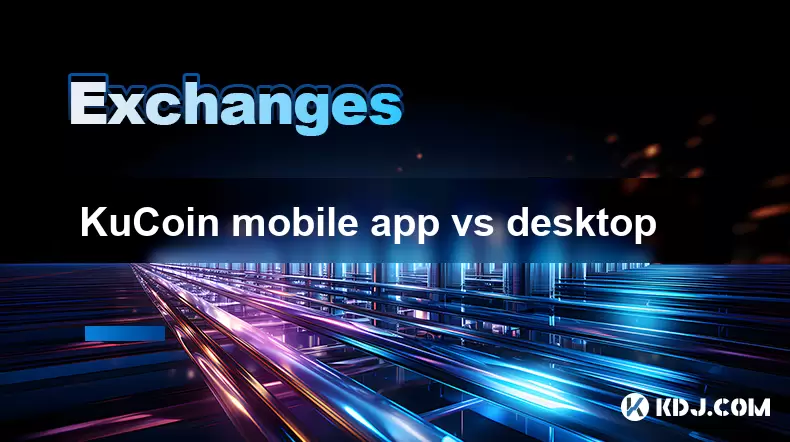
KuCoin mobile app vs desktop
Jul 19,2025 at 08:35am
Overview of KuCoin Mobile App and Desktop PlatformThe KuCoin ecosystem offers both a mobile app and a desktop platform, each designed to cater to diff...
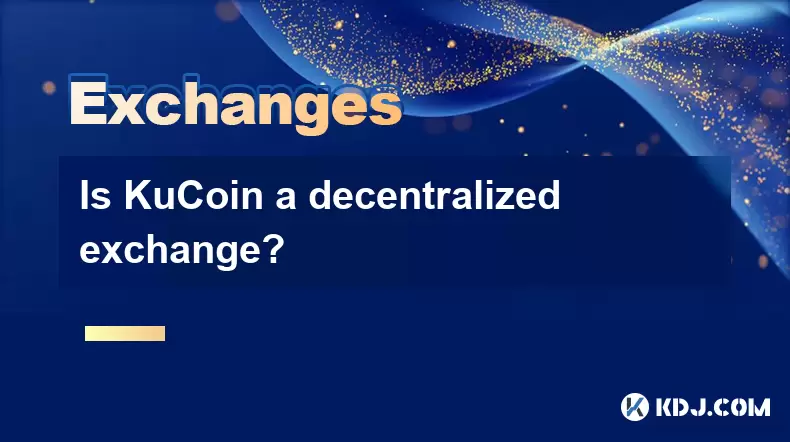
Is KuCoin a decentralized exchange?
Jul 18,2025 at 03:15pm
Understanding Decentralized Exchanges (DEXs)To determine whether KuCoin is a decentralized exchange, it's essential to first understand what defines a...
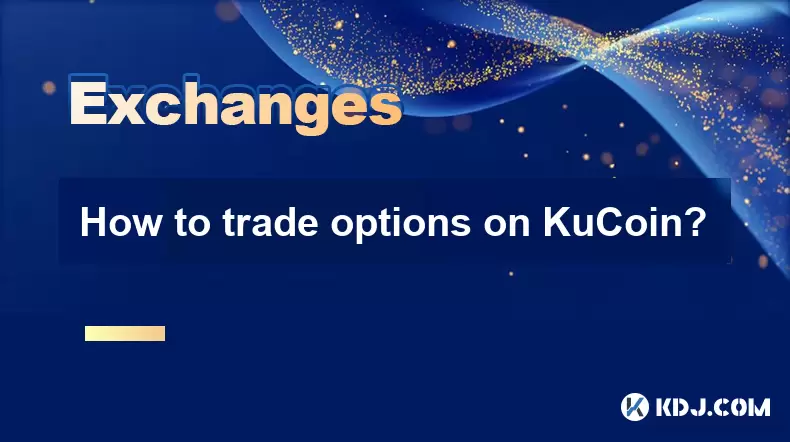
How to trade options on KuCoin?
Jul 19,2025 at 03:42am
Understanding Options Trading on KuCoinOptions trading on KuCoin allows users to speculate on the future price movements of cryptocurrencies without o...
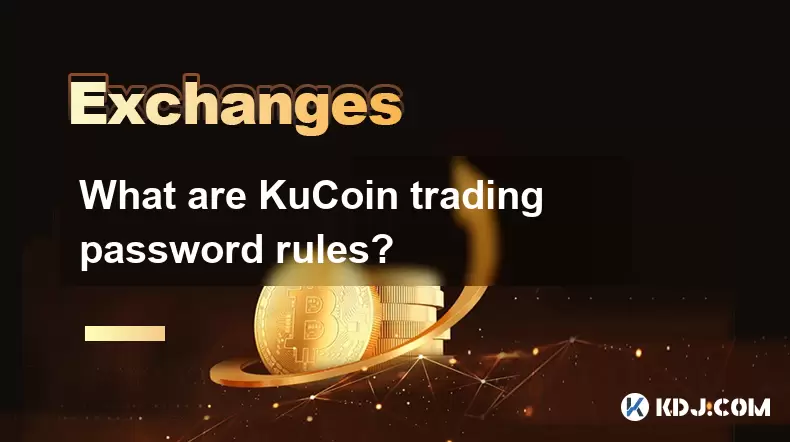
What are KuCoin trading password rules?
Jul 20,2025 at 07:56am
Understanding the Purpose of a Trading Password on KuCoinOn KuCoin, a trading password serves as an additional layer of security beyond the standard l...

Who is the CEO of KuCoin?
Jul 20,2025 at 09:35am
Background of KuCoinKuCoin is one of the largest cryptocurrency exchanges globally, known for its diverse range of trading pairs and user-friendly int...
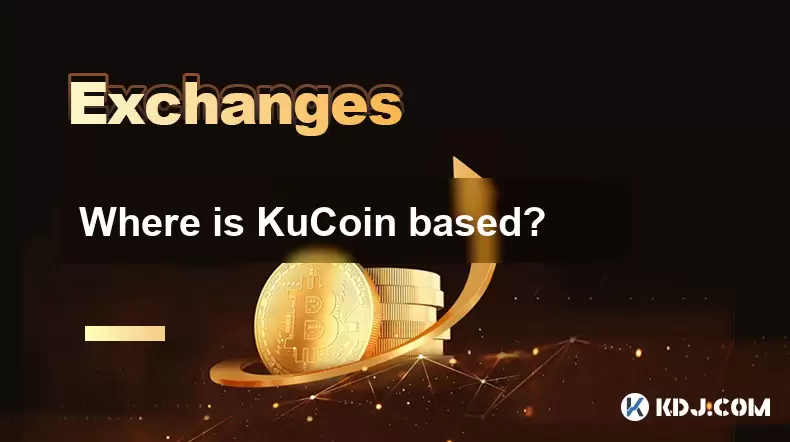
Where is KuCoin based?
Jul 22,2025 at 10:35pm
Understanding KuCoin's Global PresenceKuCoin is one of the most recognized names in the cryptocurrency exchange market, serving millions of users glob...

KuCoin mobile app vs desktop
Jul 19,2025 at 08:35am
Overview of KuCoin Mobile App and Desktop PlatformThe KuCoin ecosystem offers both a mobile app and a desktop platform, each designed to cater to diff...

Is KuCoin a decentralized exchange?
Jul 18,2025 at 03:15pm
Understanding Decentralized Exchanges (DEXs)To determine whether KuCoin is a decentralized exchange, it's essential to first understand what defines a...

How to trade options on KuCoin?
Jul 19,2025 at 03:42am
Understanding Options Trading on KuCoinOptions trading on KuCoin allows users to speculate on the future price movements of cryptocurrencies without o...

What are KuCoin trading password rules?
Jul 20,2025 at 07:56am
Understanding the Purpose of a Trading Password on KuCoinOn KuCoin, a trading password serves as an additional layer of security beyond the standard l...

Who is the CEO of KuCoin?
Jul 20,2025 at 09:35am
Background of KuCoinKuCoin is one of the largest cryptocurrency exchanges globally, known for its diverse range of trading pairs and user-friendly int...

Where is KuCoin based?
Jul 22,2025 at 10:35pm
Understanding KuCoin's Global PresenceKuCoin is one of the most recognized names in the cryptocurrency exchange market, serving millions of users glob...
See all articles

























